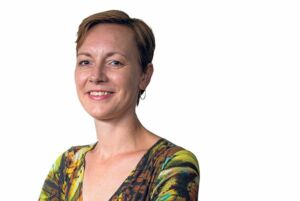Opinion
Mental Floss: Are things looking rosy?
This article is more than 11 years old.
Karina was born in Copenhagen but raised on Belgian waffles. She has lived in six different countries, and speaks just as many languages. She is a psychologist, couples therapist and university lecturer. As an academic she has worked with expat issues for more than ten years. Find her at karinalins.com

Copenhagen is “the gay-friendliest place on Earth”, according to a recent Lonely Planet ranking. And the tourist portal visitcopenhagen describes the city as “gayer than gay”, stating that you can “be free, open and most of all yourself” in Copenhagen. Which leads to the discussion if our capital actually deserves this praise, and begs the question if things really are that rosy here?

Photo: Colourbox
At the forefront
It is true that Denmark has been at the forefront: a Dane, Lili Elbe, was the first person to undergo sex reassignment surgery in the early 1930s; the world’s first famous transgender woman, Christine Jørgensen, an American with Danish roots, chose it as the location to have her own reassignment surgery in the early 1950s; it was the first country to legalise pornography in the late 1960s; and it again made history in the late 1980s by becoming the first nation in the world to recognise registered same-sex partnerships.
These are just some of the records to be proud of, and so it seems Denmark has indeed come a long way. There is no doubt that things are better here than in many other European countries, not to mention the countries where gay people are still prosecuted or even executed.
Mostly hidden
Often referred to by the umbrella term LGBT (Lesbian, Gay, Bisexual and Transgender), this community is a minority group that with their very being, challenges the prevailing hetero-normative standard of society. They are usually not a visual minority, except perhaps at the yearly Copenhagen Pride, where the whole point is being visible.
But the everyday LGBT person isn’t necessarily wearing a pink-feathered boa and will often try to blend into the hetero-normative society that Copenhagen by and large still is. It is exactly this invisibility that can account for some of the problems the community faces.
Help not worth the trouble
When it comes to seeking help, too many people from the LGBT community still encounter a lot of antagonism. People who are open about their non-heterosexual behaviour and identity in Copenhagen are likely to experience homophobia and hetero-sexism, if not from friends or family, then from Danish society at large.
Transgendered individuals, who identify with the opposite sex to their assigned sex at birth, are even more likely to encounter hostility. All this may encourage people to keep their identity and behaviour a secret, and ultimately may lead to them not seeking out services that they might need.
This in turn means they are not provided with appropriate health services, including mental health, because of the perception there are not enough LGBT people who need them. Just to be clear: this is not to say there is a correlation between sexual orientation and psychopathology.
However, like members of other minorities, they are subject to acute and chronic stress, related to their occupation of a stigmatised social position.
Come out and be visible!
So we shouldn’t rest on our laurels. More attention needs to be given to the fact that encountering homophobia is still a normal part of the lives of people who identify with the LGBT community – coming first in the top ten gay-friendly places will unfortunately not change that.
It takes a lot of courage to go against the norm, as holding hands with a same-sex partner and other public displays of affection will not go unnoticed here in Copenhagen. But hopefully, more people will take the brave step and come out. The more visibility, the less ostracised the LGBT community becomes. So whether Copenhagen actually deserves the top spot on the list of most gayfriendly locations is secondary, as long as it gets people thinking and talking about the issue.
About










































